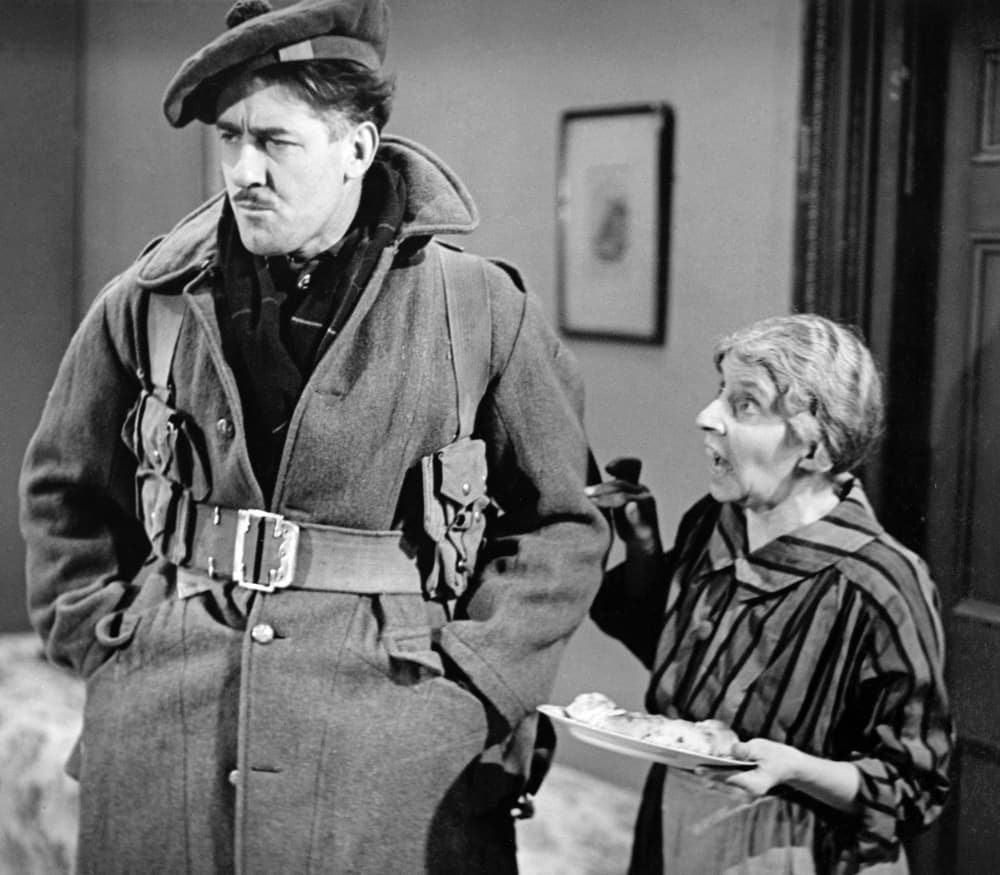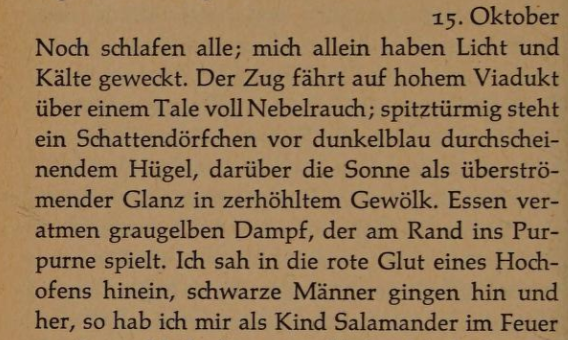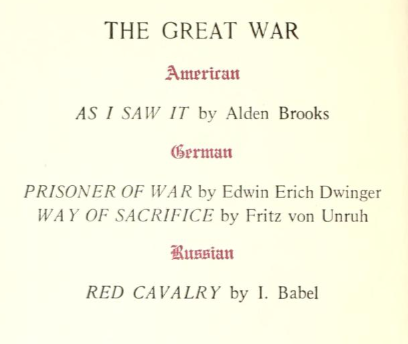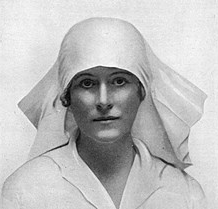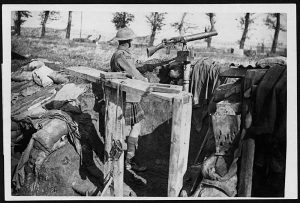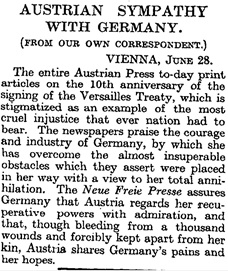A hugely popular playwright before the First World War, best known for his Peter Pan, or The Boy Who Wouldn’t Grow Up (performed 1904; published 1928), the Scottish author J.M. Barrie (1860-1937) continued to write during and after the conflict.
Barrie was affected profoundly by the death in the First World War (in 1915) of George Llewelyn Davies, one of the five brothers to whom he became guardian after their parents’ deaths in 1907 and 1910 (Birkin 1979, pp. 243-6), the wounding of another, Peter, the model for Peter Pan (Birkin 1979, p. 257), and other losses of families and friends around the time. These experiences form part of the backdrop for the play The Old Lady Shows Her Medals (1917), first published in the collection Echoes of the War (1918), and later as the title piece of a collection of four plays in the Uniform Edition of Barrie’s work (1921; cited here).
The title character is Mrs Dowey: the ‘medals’ are imagined letters from an imagined son whose name she has taken from the newspaper. This dissimulation, replete with pathos, is situated in the prose introduction as ‘a secret sorrow, namely, the crime’ (pp. 8-9); the narratorial prose voice which interjects among the dialogue throughout the play in place of what might usually be stage directions, later relents: ‘The wicked woman: but let us also say “Poor Sarah Ann Dowey”’ (p. 17).
By fortune and circumstance, the ‘son’ Kenneth agrees to spend his five days’ leave with her. He is described as:
a great rough chunk of Scotland, howked out of her not so much neatly as liberally; and in his Black Watch uniform, all caked with mud, his kit and nearly all his worldly possessions on his back, he is an apparition scarcely less fearsome (but so much less ragged) than those ancestors of his who trotted with Prince Charlie to Derby. (p. 24)
The Scots word ‘howk’ is usually associated with collecting crops, particularly potatoes in the autumn (some areas still today receive an elongated ‘tattie howkin’’ school holiday). The connection with the Jacobite ‘Young Pretender’ is surprising for 1917-18, a time at which we would expect British national unity to be uppermost. At Kenneth’s curiosity for an explanation, she explains that she calls herself ‘Missis to give me a standing’, and mourns that ‘It was everybody’s war, mister, except mine’ (p. 26). The pragmatic response to systemic misogyny and the non-combatant desire to participate, or at least share, is exculpatory, and the latter perhaps also speaks to Barrie’s own feelings, as a man in his late 50s, in the face of the conflict.
After their ‘queer first meeting’ (p. 34) the two reach a rapprochement, as Kenneth reveals that he does not have his own family. He is curious enough, and glad enough of her desire to look after him, that the bargain that she can, ‘for [her] own personal glory […] go on pretending to the neighbours’ seems worth its chance (p. 41). He finds her funny (peculiar and humorous), but does not make her a joke; they share their lack of family, in the wartime state of exception, and for Kenneth in the face of death, form that bond in a matter of days. At the end of his leave they speak to each other as mother and son, and he makes her his next of kin.
The play culminates, inevitably, with her receiving his personal effects, including his ‘bonnet, a thin packet of real letters, and the famous champagne cork’, from the bottle they shared on his leave (p. 57). The end of the play feels odd: ‘Her air of triumph becomes her. She lifts the pail and the mop, and slouches off gamely to the day’s toil’ (p. 58). The triumph is… that she has made this human connection? That she feels she has participated in the conflict? That, deus ex machina, she has not been caught out in her lie?
The play offers many things to a late wartime audience: soldiers returning home on leave, the forming of new emotional connections, the hope that scenarios which seem unlikely to resolve themselves can achieve a satisfactory resolution; the importance of women’s role during the conflict. It also offers the chance to grieve, along with the redeemed title character, who has barely had time to get to know her ‘new son’.
We came erroneously to add this play to the War Books Boom database. It was advertised in the Bookman in December 1926, but this seems not to be a new publication: the edition advertised is the Uniform Edition, which seems to have remained in print over the five years since its publication. This raises a further question which we might take into account: how, and whether it is possible, to account for works which are not newly published in this period, but are enduringly popular.
This play continued to be popular across multiple forms, as with so many of the successes of the War Books Boom. There were two American pre-Code film adaptations (1930, 1933), an early BBC television adaptation first screened over the 1937 Christmas holidays, with further radio performances subsequently and through the war years, as well as a 1952 television revival. There were numerous other US adaptations for screen and radio in the post-Second World War years, as well as a one-act musical (1960). This attests to Barrie’s enduring power, but also the continuing desire for people to process these sorts of emotions via creative works.
Initial research by Ray Thomson
Revised version by Andrew Frayn
Works cited
J.M. Barrie, The Old Lady Shows Her Medals, in The Old Lady Shows Her Medals (London: Hodder and Stoughton, 1921), pp. 3-58
Andrew Birkin, J.M. Barrie & The Lost Boys: The Love Story that Gave Birth to Peter Pan (New York: Clarkson N. Potter, 1979)
